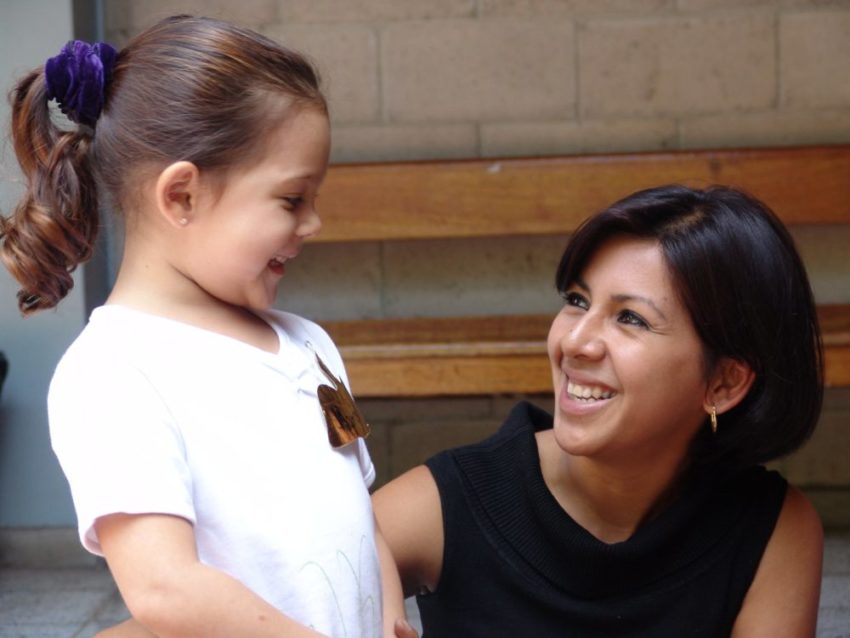Posts Tagged ‘Teacher Retention’
Don’t You Want to Stay? Virtual Stay Conversations as Key Teacher Retention Strategy
Teacher and staff retention is a common concern we hear from school leaders in “normal” times. One of the most efficient and lowest cost methods we have found for encouraging great teachers to stay is by holding “stay conversations”. A stay conversation is an informal chance to share how much you appreciate a teacher’s work, and to directly ask them to stay at your school for the following school year. Stay conversations don’t take much effort, but they have a big impact. When teachers were asked why they left their school, a common response was simply that no one asked them to stay.*
A stay conversation usually happens in a regularly scheduled one-on-one meeting with the teacher. Stay conversations should begin early in the year, ideally before winter break. Leaders can and should continue to communicate value and priority to teachers throughout the spring. This way, if teachers are presented with an opportunity to leave their school, they know how much they are valued and are less likely to leave.
That’s how stay conversations might proceed in normal times. These, however, are not “normal” times. The challenge and uncertainty of the pandemic makes retaining teachers even more critical. Just because we are all working virtually, leaders should not stop holding stay conversations. In fact, the best practices for stay conversations still apply: keep the conversation brief, affirm how much you value the teacher, and articulate how important they are to your students and school. Be honest about the challenges of remote teaching and uncertainty of what the fall might look like. Then share why the teacher is an important part of the team, especially in this uncertainty. Strong teachers are providing a lifeline to families and students right now, and they will continue to need your great teachers when school restarts in the fall. Finally, ask the teacher directly to stay at your school next year.
Ideally you are touching base with each teacher individually on a regular basis during this time of remote teaching and learning. These one-on-ones can be quick check-ins to ask the teacher how things are going for them, and how you can support them. And they are a great time to say directly how much you value the teacher’s work, and ask them to stay next fall.
P.S. If you need a soundtrack to your stay conversations, try this pop, or R&B, or classic rock, or country, or early 90s style (my personal favorite)!
-Jessica
*From The Irreplaceables, TNTP, 2012.
Celebrating Teacher Appreciation Week 2020
Early May is one of our favorite times of the year. The weather warms, flowers bloom, and teachers are celebrated for an entire week! While we think teachers (and leaders) should be recognized everyday for their tremendous work, Teacher Appreciation Week, this year from May 4 – May 8, is a nice formal opportunity to say thank you.
Though we are teaching, learning, and working virtually, here are 7 ideas for celebrating teachers:
- Send a personal note. More than ever, teachers are inundated with emails and texts. A personal note – sent via the old fashioned, but dependable USPS – can go far for anyone, including your teachers.
- Give a gift. Sometimes, someone taking care of the dinner that night is all you need to make it peacefully to tomorrow. Gift cards, meals from local restaurants, and gift certificates to local businesses are always appreciated. Even a small plant left on the teacher’s doorstep to “decorate their home office” is a meaningful way to say thanks.
- Give time. For leaders, consider cancelling a regular staff meeting and encouraging teachers to use the “found time” to do something for themselves.
- Get families to engage. Ask families to record a short video clip, write notes of appreciation or text pictures of homemade thank you cards.
- Party in a box. Put together a small package of party supplies–balloons, sunglasses, streamers, candy, and a small gift or two–and mail it to each teacher with a label on the outside directing them not to open until a certain date and time. During a staff meeting, have everyone open their boxes simultaneously and start the party!
- Opportunities for input. For some, the greatest recognition is the opportunity to be heard and enhance their impact. Think of ways to bring teachers into decisions–about curriculum, schedules, virtual learning and more.
- Shout-outs. While you may not be physically together, shouting out teachers in meetings, emails, and on social media/websites is a simple, but effective method for letting folks know you value and appreciate them, and a great way to highlight the values you most want your team to exemplify.
Yes, You Can Stop Doing That
Before COVID-19, education leaders prided ourselves in being goal oriented professionals, doing everything in our power to support student success. Working in schools, districts, CMOs, state departments of education and in supporting organizations, we took pride in our commitment to do whatever it takes, knocking through barriers, and always maintaining high expectations for ourselves and others.
But now, that day is over. Or at least on pause. We are balancing full days of meetings with full days of homeschooling our own children, we are nursing ourselves or our families back to health, we are facing fear, frustration, and grief. Our lives have changed and so too must our expectations for ourselves and for others.
Talking with talent leaders across the country, We’re discovering that many simply need to hear, “You can stop doing that. It will be ok.” It’s time to re-prioritize and focus on the purpose of your work, not stay wed to the original plan or program. Schools can be our model. Teachers and principals are learning a whole new way to educate students. They are no longer teaching the same lesson plan, but they are working toward the same standards, ensuring that students are able to learn and grow. District and network leaders need to do the same.
For example, we were recently asked by talent leaders in both a big urban district and in a big charter network about how to continue their robust evaluation systems. While we firmly believe in systems of teacher development, evaluation, recognition and pathways (and have spent most of my career focused on them), now is the time to pause and reassess. It’s the time to ask yourself what the ultimate purpose of your work is and if your system is doing that now. It’s time to simplify and focus on achieving that original purpose, not to MacGyver a complicated and time consuming process. When we talked with leaders about their multiple measure evaluation systems we were direct – your student achievement measures based on interim data aren’t going to be accurate and won’t help teachers get better, so don’t do that. Your families don’t have time to give feedback on teachers, so don’t do that. Your teachers aren’t teaching in ways that align to the observation rubric and had to learn this new method in a day, so don’t do that. Instead, coach and support the adults to do the best they can in a tough situation so they can be their best for kids.
The purpose is always to support people to get better and stay longer.
Is your system doing that now?
As a talent leader, we recommend focusing your time and energy into five priorities:
- Communicate clearly and transparently – State what you know and what you don’t yet know. Be clear about the values that are driving decisions and what is being prioritized right now. Be real about your own fears and your own optimism. And find ways to connect. You can share a video, hold office hours or reach out one on one. In doing so, always focus on the employee’s needs as a person.
- Listen to and support your school leaders – School leaders are struggling through this time, navigating their own emotions and disappointments, and those of their teachers, students and families. Be responsive to their needs and make them your priority. When you need their input, make it as easy as possible for them. Give them a clear proposal and let them react.
- Retain your staff – Have “stay conversations” so people know they are valued and appreciated. Ask them directly through conversations or surveys what their plans are for the fall. Consider how to retain salaries through limited budgets and how to incentivize people through non-monetary compensation.
- Recruit and hire new candidates – Hiring will need to move online, but keep the process moving. Think about how to get hiring managers comfortable granting offers remotely and how to get candidates comfortable to accept offers. Identify how to bring your schools’ unique culture to candidates. For more, check out TNTP’s Virtual Hiring Guide and Fast Company’s article on unconscious bias.
- Recognize and celebrate people – Consider cancelling performance based rewards based on results from 2019-2020 and re-use these funds to recognize teachers now (or returning teachers in the fall). Identify ways to say thank you for the hard work and creativity people are bringing to the work. For example, a personal thank you message, a take-out restaurant gift certificate or a retention bonus at the start of next school year are all effective in letting people know they are appreciated.
As our fearless talent leaders, we want to say thank you for taking care of the adults so they can take care of the children. And, yes, you can stop doing that.
Teacher Leadership: More than a Buzzword
The education field loves jargon. From “21st-century learning” to “college and career readiness”, new jargon enters our vocabulary as priorities and policies shift. Recently, we’ve heard one buzzword repeatedly swirling across blogs and conferences: Teacher Leadership.
What is teacher leadership?
In What do we know about teacher leadership?, Jennifer York-Barr and Karen Duke from the University of Minnesota reviewed two decades of literature and define teacher leadership as “the process by which teachers, individually or collectively, influence their colleagues, principals, and other members of the school community to improve teaching and learning practices with the aim of increased student learning and achievement”
A few key ideas about teacher leadership stand out:
- It is a process, not just a position. Anyone, at any level of an organization, can demonstrate leadership. Formal roles can be helpful, but are not the end goal.
- It is about influence beyond the self—whether that be on peers, managers, subordinates, etc.
- It is ultimately about increased student learning and achievement.
Why teacher leadership?
Leading Educators put it best: “When administrators and teachers share leadership, teachers’ working relationships are stronger, student achievement is higher, and highly effective teachers can be retained in the schools that need them. Highly effective teachers can have substantial spillover effects on their peers’ performance.”

Much like a lesson or unit plan, teams should start with the end in mind: identify the specific rationale behind investments in opportunities for teacher leadership. School systems may pursue teacher leadership to:
- Further develop top teacher talent
- Help other teachers improve
- More effectively implement key priorities (e.g., curricula, standards)
- Build a pipeline to the principalship
- Distribute leadership within schools and make principals’ span of supervision manageable
- Increase highly effective teachers’ impact on student learning
- Increase teacher retention by investing in them and their ideas
Once a school, district, or network identifies why they want to invest in teacher leadership–including specific measurable goals–it becomes critical to design initiatives that will maximize that investment.
Intrigued? In our next post, we will share best practices for successfully launching teacher leadership initiatives. Hungry for more? Check out The Network Effect from Chiefs for Change and Public Impact’s Opportunity Culture.




